Decarbonization is becoming a driving force behind decisions and innovations in the energy industry worldwide, and countries are setting aggressive targets. Significant investments are being made, many of them in renewables and technologies such as electric vehicles (EVs) but these changes include incredible complexity. To realize the full value of the innovations being implemented, large amounts of data will need to be managed and this will require assistance from artificial intelligence (AI) and related technologies.
Current research at Hitachi includes a collaboration with Arizona State University (ASU) and the Arizona Public Service (APS). In this technotalk moderated by Bo Yang who leads energy solutions research at Hitachi America R&D, Professor Raja Ayyanar from ASU, Dr. Daniel Haughton from APS and Dr. Ernst Scholtz from Hitachi Energy address current and future developments in the energy industry.
(Published 20 January 2023)
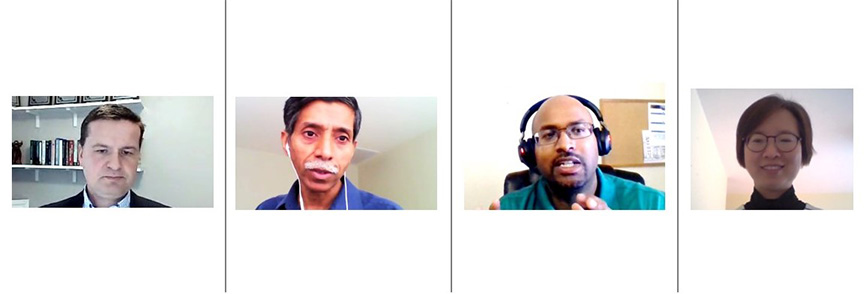
Bo
Let’s begin by defining decarbonization.
Raja
At ASU, we pledged in 2007 to become carbon neutral by 2025 and reached that goal six years early. We achieved that through offsets via solar power, energy efficiency on campus and lowering other emissions.
Carbon neutrality has three aspects or scopes. Scope one is emissions from ASU-owned and other ASU-controlled resources. Scope two is emissions generated from energy ASU purchases from our utility. For scopes one and two emissions, we've reached carbon neutrality. Now we are working toward the more challenging scope three, which includes all indirect emissions, like those related to purchases and air travel by faculty and students.
Bo
For the first two scopes, do you have recommendations for other universities with similar goals?
Raja
Our School of Sustainability has many resources related to what we are doing at ASU and other things that can be done to reach carbon goals. This may not be complete carbon neutrality, but overall reductions in greenhouse gas emissions help. We mainly achieve our goals through large-scale solar plants, which may not be possible for most universities. But pursuing energy-efficiency measures makes sense for both carbon reduction and energy cost savings.
Bo
Typically, universities' energy consumption is concentrated geographically. Ernst, for commercial entities with more distributed facilities, how should they approach decarbonization?
Ernst
The energy transition away from carbon-heavy supply sources can be achieved by for example incorporating more renewable energy sources in the generation stack and making changes on the energy consumption side. Changes such as the electrification of transport and increased intelligence on managing consumption such as smart buildings. Such steps help in the transition both locally and globally, where similar local efforts can be replicated at other locations due to spread out operations. For commercial entities one can look at how to manage the consumption side of things to assist as well as employing local renewables such as solar to limit the overall demand from the grids or even supplying surplus energy back to the grid.
Bo
Hitachi is a big corporation with its own decarbonization and sustainability commitments. Can you speak to that?
Ernst
Regarding our operations in factories, we have long invested in automation, focusing on energy efficiency and reducing the factories’ carbon footprints. We also have focused on smart buildings, taking the solutions we develop and implementing them ourselves. We supply tools to customers but also utilize digital methodologies within our organization. That is an area where we can improve our processes, use more digital and strive for more efficiency.
Bo
Industry trends have been toward improving efficiency and reducing consumption. But electrification adds more loads to the grid. In the U.S., total electricity consumption is dropping or at least flattening, but we see an increase in EV charging, which will add significant consumption and perhaps eventually reverse the declining trend. Can transportation electrification eventually offset efforts to reduce the total load on the grid side?
Raja
Overall, it will be positive for decarbonization because transportation is one of the larger sectors for emissions. We are not just increasing the load and emissions due to electricity consumption, we’re also reducing emissions from vehicles.
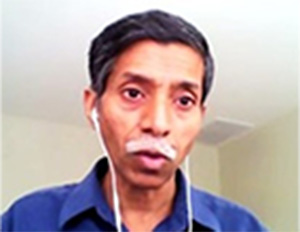
Ernst
I don’t see these as competing objectives. What we’re doing is converting the overall energy landscape to be cleaner and less carbon dependent by incorporating more cleaner renewable energies as sources and electrifying certain sectors such as transport.
Raja
Transportation electrification is a major emissions reduction solution. It also enables increased penetration of renewable resources. For example, in Arizona, we have more solar generation during certain times than is consumed. So, there is significant reverse power flow. Large-scale EV charging becomes a solution for much higher penetration.
Ernst
Also, in changing the energy landscape, we need to ensure that we don’t have bottlenecks in routing clean energy through the electrification infrastructure. It’s not just a supply and demand equation, but it also involves managing congestion in the interconnecting infrastructure to drive this transition.
Daniel
We view decarbonization and electrification as complementary. With variable weather-dependent resources like solar, its abundance — in the Southwest particularly — creates a situation where electricity in the middle of the day is incredibly cheap, especially in the spring and fall. There is more generation than load to consume it. That creates an economic incentive for beneficial electrification, such as EV charging and buildings that are more dependent on electricity. Eventually, there’s a good economic use case for increased renewables.
Transportation now accounts for a higher share of emissions than the electricity sector, which has had reductions up to 30% over the last decade. Other sectors haven’t achieved nearly that much decarbonization. Getting full decarbonization requires tackling and addressing some of those sectors, which provides a push for transportation electrification, greener buildings and other industrial applications.
Bo
A duck curve occurs, with low net-load during the day, when solar generation is highest, and then peak demand in the early evening, such as when people charge their vehicles after work. Without coordination, the overall charging pattern could worsen line congestion and contribute to the duck curve adversely. Utilities need to take the lead in this area guiding customer charging behaviors. Daniel, what initiatives or incentives does APS offer?
Daniel
We have relied on time-of-use pricing to educate customers on constraint and congestion time periods. Residential time-of-use pricing helps customers understand that it’s cheaper to use electricity before 3 or 4 p.m. and later at night. We’re also looking at even cheaper super-off-peak rates in non-summer months between 10 a.m. and 3 p.m., because there’s virtually no heating or cooling. Then, when solar goes away at night, there’s a significant ramp-up to accommodate load levels, and we need other resources for that. So, other technologies need to be part of that mix. There are concerted efforts to get battery energy storage technologies developed because batteries are flexible and can help with those ramps and stability concerns. They can store excess solar for later use. That provides clean energy during the highest carbon-intensive periods and is more controlled. So, there’s a convergence of regulatory policy, decarbonization, electrification and other technologies to consider.
Bo
Currently, there's a strong political push for carbon transition, and industries are following that lead. Perhaps surprisingly, the power industry leads in reductions. But most of the industry is still getting infrastructure in place, and the real changes to business and operating models and system controls have yet to come. What are your perspectives on this?
Ernst
It isn’t surprising that the power industry is ahead in this transition to lower carbon since wind and solar power generation have transitioned from niche to mainstream over the past decades and economies of scale have helped break down the barriers for adopting renewable sources even more broadly. Previously, government incentives encouraged investment, but now it's economical to install, for example, distributed solar on rooftops. Cost challenges with battery energy storage is actively being addressed, and it is anticipated that its adoption will increase in the near term but it has not been broadly rolled out yet, which potentially limits turning to renewables only at this stage. That's why we need different technologies to help with the limitations.
Bo
Because of regional policy or geographical differences, some regions will have more local renewables than others. For example, the San Francisco Bay Area doesn't have a lot of space to build large scale ground mounted renewables. So, companies sign power purchase agreements (PPAs) with wind or solar farms that are far away, which means renewables will be more concentrated in some places and transported to others. Meanwhile, to reduce overall energy-transfer costs, generation should be close to the load center. These two trends seem to point in different directions. Daniel, what are the trends in your region?
Daniel
We look at things through a holistic lens. Energy supply is one aspect, but we also consider resiliency, fault or disturbance tolerance, and other factors. The challenge or opportunity with renewables is that solar or wind, for example, require sun-rich or wind-rich areas. We can't ignore the need for transmission and distribution (T&D) infrastructure. Energy must get from the source to where the loads are. With centralized generation, we have more transmission, often long distances. When decentralized, generation reliability within load pockets is important. So, we need a balance between local and remote generation.
With increased adoption of technologies like rooftop solar and energy storage, there's potential for hyper-localized reliability or resiliency at the home, neighborhood or facility level. There has been a lot of attention on microgrids and other reliability and resiliency plays, and there will be more of that with a highly decentralized grid with localized pockets of generation, storage and other resources.
Bo
There’s a lot of complexity and many unique situations. What technologies are needed to address this? In particular, interest in AI and energy has increased significantly. Can AI be a game changer in addressing complexity?
Ernst
To manage grids, we have relied on a lot of algorithms and digital tools, like network models. Now is a great time for applying AI, machine learning and other advances to our industry because there’s much more data, and that will increase as we install more sensors in distribution grids, for instance. Operators are overwhelmed with data and alarms. AI can help make sense of this data and extract key information.
AI also can assist with interconnected T&D, new generation and new types of loads, as well as human behavior, which is difficult to model. AI is well suited for assessing complex interactions and capturing relationships. So, there are ample opportunities for AI-assisted solutions for grid and asset management and, eventually, AI-human collaboration.
Raja
Additionally, given the scale, a data-driven approach makes more sense than model-based or physics-based options. This is where AI and machine learning techniques can really excel.
In one solar energy technology project involving Hitachi, APS and ASU, we use machine learning techniques for analytics, like dynamic host capacity analysis, to avoid complete dependence on the feeder model. It is based more on collected data. These techniques even can help adapt controls to operating conditions. AI also can help with smart charging management.
Daniel
We will rely heavily on AI, machine learning and automated systems to help manage things. An important near-term risk is with workforce transition. The current generation of new employees expects to be able to move around and wants flexibility and adaptability. So, we need systems that provide processing horsepower and have less reliance on subject matter expertise and models.
Complexity is a larger, long-term issue. Over the last decade, we’ve interconnected more than 130,000 residential rooftop solar sites, and we have 52,000 smart thermostats behind customer meters. Also, EVs have fixed-energy storage and storage that varies in time and location. So, utilities play the role of air traffic controller. On any given day, they need visibility into everything across the system. That isn’t possible on an individual device basis, but they will have hundreds of thousands of solar systems, Evs, smart thermostats and other technologies that are interactive. Utilities will need systems, data and technologies to help manage the grid.
Bo
AI and models will need each other, but their roles in the overall decision-making process will be different. Will models be even more important, and how will utilities improve data and model quality? Also, what digital solutions can leverage AI, models or other capabilities, and how would that reshape the enterprise system?
Daniel
There will be increased reliance on models, and they must be increasingly granular. That will probably be at the individual customer residence level. Ten years ago, we were using more rudimentary models and missing a significant amount of information. Today, many of the applications have some level of automation.
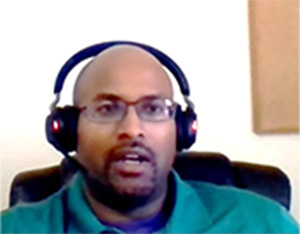
The next layer we are tackling is distributed energy resource (DER) management. Currently, we don't have adequate penetration or control of customer resources. Even with residential solar aggregated on a circuit, it's not a controllable or dispatchable resource. But with technologies like EVs and batteries retrofitted to solar sites, we get dispatchable resources. We must ensure that models and the information available at customer premises provide operators visibility into how much energy is there and how much is dispatchable. Then we can manage at a more granular level, but we're still exploring opportunities.
Bo
This complexity will require different approaches. Direct management is easy, but for resources requiring indirect management, utilities may need different kinds of customer motivation tool sets to enable these things. Before we close, Daniel, can you comment on this?
Daniel
We have pilots and aggregation services for customers. For example, we have a thermostat aggregation program during the hot summer months. Among other things, we can start precooling the home two or three hours before the peak window. Then during that window, there might be two hours when the thermostats are set a little higher and not running. It’s been a dependable resource for operating through some of the hottest, most constrained days. For 2022, we're planning a battery aggregation pilot to do something similar.
Bo
Raja and Ernst, do you have thoughts to share on this?
Raja
When controlling hundreds of thousands of devices, cybersecurity will be critical. Remotely controllable advanced photovoltaic (PV) systems, EV chargers, utility control devices and smart thermostats in distribution grid environments are susceptible to cyberattack. What may be needed are AI-based solutions that reduce the attack surface and detect and mitigate attacks. We are addressing this in the solar project I mentioned earlier by developing intrusion-detection systems for PV and DER and an anomaly-detection system based on machine learning models and algorithms.
Ernst
I totally agree that cybersecurity is essential in the operation of a grid today and even more so in the future. Cybersecurity has been high on Hitachi Energy’s agenda for a better part of two decades for any solution related to grid automation and its control. Automation devices and control-system software are subject to rigorous testing against known vulnerabilities, and as vendor a rapid response program to assess and correct solutions against any new emerging threats is a necessity. The importance of cybersecurity will increase in the future and be an undisputable firm requirement from our customers to be compliant (even beyond) with industry standards and practices.
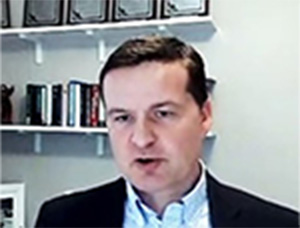
The use of AI and other emerging technologies will be critical in managing the increasing complexity of energy systems as the industry transforms to deliver a stable supply of electricity while realizing carbon neutral goals. As the landscape continues to shift, we will explore and share developments and challenges in this important area.
(As at the time of publication)
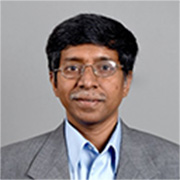
Raja AYYANAR, Ph.D.
Professor, School of Electrical, Computer and Energy Engineering
Arizona State University
Dr. Ayyanar currently leads a multi-university, multi-industry research project on enhancing resiliency and reliability of distribution systems under extreme solar penetration.
Raja is an IEEE Fellow and his expertise is at the intersection of power electronics and power systems. He has published over 200 journal and conference papers in the area of switch mode power electronics, renewable energy and electric vehicles and holds 8 U.S. patents.
Raja received his Ph.D. degree from the University of Minnesota, Minneapolis in 2000.
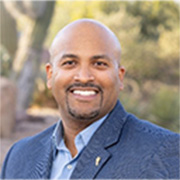
Daniel HAUGHTON, Ph.D.
Director of Technical Engineering Support
Arizona Public Service (APS)
Dr. Haughton is presently responsible to further innovation, technology implementation, and grid intelligence to enhance grid visibility, control, power quality and reliability. He has worked in various roles in transmission and distribution engineering at APS with a focus on expanding access to clean and renewable generation while maintaining high grid reliability and power quality.
Daniel received his Ph.D. and M.S. from Arizona State University (ASU) and currently serves as an adjunct professor at ASU.

Ernst SCHOLTZ, Ph.D.
Vice President, and
Head of Product Management Network Control, Enterprise Software,
Hitachi Energy Ltd.
Ernst Scholtz has held various positions in ABB R&D and Hitachi Energy, starting out as a scientist in ABB Corporate Research to ultimately running the full portfolio of ABB’s Corporate Research (covering all technology building blocks from Materials all the way through to Software) reporting to the Group CTO before moving to ABB Power Grids Service as Head of Strategy and Portfolio.
In 2020, Ernst joined Hitachi Energy’s Network Control business as Head of Product Management overseeing the direction of the Network Manager product line with products for Generation, Transmission, Distribution, and Power Markets. In addition to positions at ABB and Hitachi Energy, he worked as a senior analyst and trader at EPIC Merchant Energy (now part of EDF Trading) focusing on financial trading in North American deregulated power markets. Ernst's interests are in the areas of systems, control, software, and finance with a focus on applications in power systems, and industrial processes.
Ernst received his B.Eng. and M.Eng. from the University of Pretoria and his Ph.D. from MIT, all in Electrical Engineering with a control and power system focus.
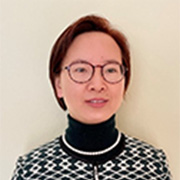
Bo YANG, Ph.D.
Senior Director, Energy Solutions Laboratory
Research & Development Division
Hitachi America, Ltd.
Bo Yang leads the energy solution team in Hitachi America and pioneers in adopting AI/ML techniques for energy applications. Her team has developed several innovative AI and IoT platforms. Bo also represents Hitachi in projects funded by federal and state agencies. She has extensive academic and professional experiences on Distribution Energy Resource integration and control, Distribution Automation, Smart Grid, AI/ML and enterprise system architecture.
Bo received her Ph.D. in Electrical Engineering from Arizona State University. She is a Fellow of the Institute of Engineering and Technology (IET).